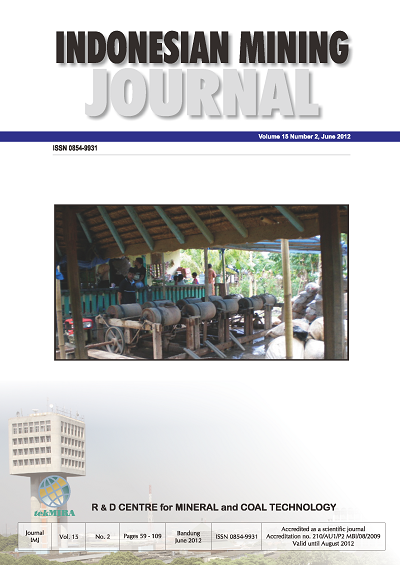A PROPOSED METHOD TO EVALUATE COUNTRY’S ENERGY UTILIZATION EFFICIENCY
DOI:
https://doi.org/10.30556/imj.Vol15.No2.2012.461Keywords:
energy effi ciency indicator, best practice energy consumption, energy projection, energy elasticityAbstract
The threat of global warming should be addressed by increasing energy effi ciency and reducing energy consump- tion, since the green house gas mainly comes from combustion of fossil fuel in energy sector. Unfortunately, the conventional energy effi ciency indicator in national level such as energy consumption per capita (ECPC), energy intensity (energy consumption: gross domestic product (GDP)) and energy elasticity frequently shows a contradictory result. Energy consumption depends on both number of populations and GDP. Therefore, the energy effi ciency indicator should also consider both parameters. The objective of this study is to develop a new energy effi ciency indicator using both GDP and energy consumption per capita as parameters. In this study, a new energy effi ciency indicator namely A/R energy is proposed. A/R energy (addition or reduction of energy) is calculated by subtracting the value of best practice ECPC with the value of actual ECPC. The value of best practice ECPC was derived from an equation correlated between ECPC and Gross Domestic Product (GDP) per capita. Using the new indicator, it is revealed that some country with low ECPC in Africa, Asia and South America should increase their ECPC while all the developed country should reduce their ECPC. The best practice correlation between best practice ECPC and GDP per capita was also used to evaluate energy projection of Indonesia. Indonesia energy projection has been developed by IEA, Green Peace and Indonesian Government. Considering GDP and population growth ECPC, it is concluded that Indonesia energy projection developed by IEA is the most realistic, effi cient but achievable.
References
Danish Energy Authority, Combined heat and power production in Denmark. www.energy.rochester. edu/dk/manczyk/denmark.pdfInternational Energy Agency, 2008. Clean Coal Technology; Accelerat- ing Commercial Policy Drivers for Development, OECD/IEA, France.
Energy Information Administration (EIA), 2005. Inter- national energy outlook 2005. ftp://ftp.eia.doe.gov/ forecasting/0484%282005%29.pdf
Green Peace International and European Renewable Energy Council, 2007. Energy revolution, the Neth-
erlands International Monetary Fund, World Eco- nomic Outlook Database, April 2006, p. 96-99.
IMF, 2006, World economic and fi nancial surveys, World economic outlook database, http://www. imf.org/external/pubs/ft/weo/2006/02/data/index. aspx
Intergovernmental Panel on Climate Change (IPCC), 2007. Climate change 2007, Cambridge University
Press. P. 103.
International Energy Agency (IEA), 2003. Energy to 2050:Scenarios for sustainable future, OECD/IEA, France. P. 207-213.
Markowitz, E.M. and Doppelt, B., 2009, Reducing greenhouse gas emissions through behavioral change, Institute for a Sustainable Environment, http://www.theresource innovationgroup.org/ stor- age/behavioral_change.pdf
Mc. Mullan, J.T., Williams, B.C. and Mc. Cahey, S., 2001. Strategic considerations for clean coal R&D, Energy Policy, vol. 29. p. 441-452.
Rühl, C., Appleby, P., Fennema, J., Naumov, A. and Schaffer, M., 2012, Economic development and the demand for energy: A historical perspective on the next 20 years, Heriot-Watt University, Edin- burgh, http://www.bp.com/ liveassets/bp_internet/ globalbp/STAGING/global_assets/downloads/R/ reports_and_publications_economic_develop- ment_demand_for_energy.pdf
Vercelli, A., 2006. World Energy Scenarios: main issues and policy options, presented in Beijing October 17th, 2006, University of Siena (Italy).
Downloads
Issue
Section
License
Indonesian Mining Journal provides immediate open access to its content on the principle that making research freely available to the public to supports a greater global exchange of knowledge.

This work is licensed under a Creative Commons Attribution-NonCommercial 4.0 International License.













